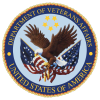The VA OIG assessed the Southeast Louisiana Veterans Health Care System’s oversight and stewardship of funds for fiscal year 2019 and identified opportunities to improve cost efficiency.The review focused on four areas:I. Use of the Medical/Surgical Prime Vendor Next Generation program. VA maintains contracts with vendors to streamline medical supply purchasing and distribution. Because its prime vendor did not fill orders consistently, the system bought only about 75 percent of its supplies through the program, falling short of VA’s recommended 90 percent goal. The system also did not always monitor the prime vendor’s performance or report performance problems to VA.II. Purchase card use. The team sampled 102 purchase card transactions and determined the system could instead have pursued contracts for 19 of them. Quarterly internal audits were also not completed on time, and approving officials did not adequately monitor cardholder purchases. In addition, the team identified 16 purchases that were split into smaller transactions to circumvent purchase limits, resulting in improper payments of about $140,016.III. Administrative staffing levels and accuracy of labor costs. The system used 251.6 more administrative full-time equivalents than other systems of similar size and complexity. The system’s director said this was partly due to initial staffing costs associated with a new medical center. The system has, however, implemented strategies to improve staffing efficiency and management.IV. Pharmacy operations and cost avoidance efforts. The system spent approximately $9 million more on prescription drugs than similar systems did. This was partly due to inaccurate or outdated prices in the system’s list of drugs and to low annual turnover of its drug supplies, but the system has made progress in improving efficiency and cost-saving efforts.The OIG made six recommendations to the healthcare system director to address the issues identified in this review.
New Orleans, LA
United States


